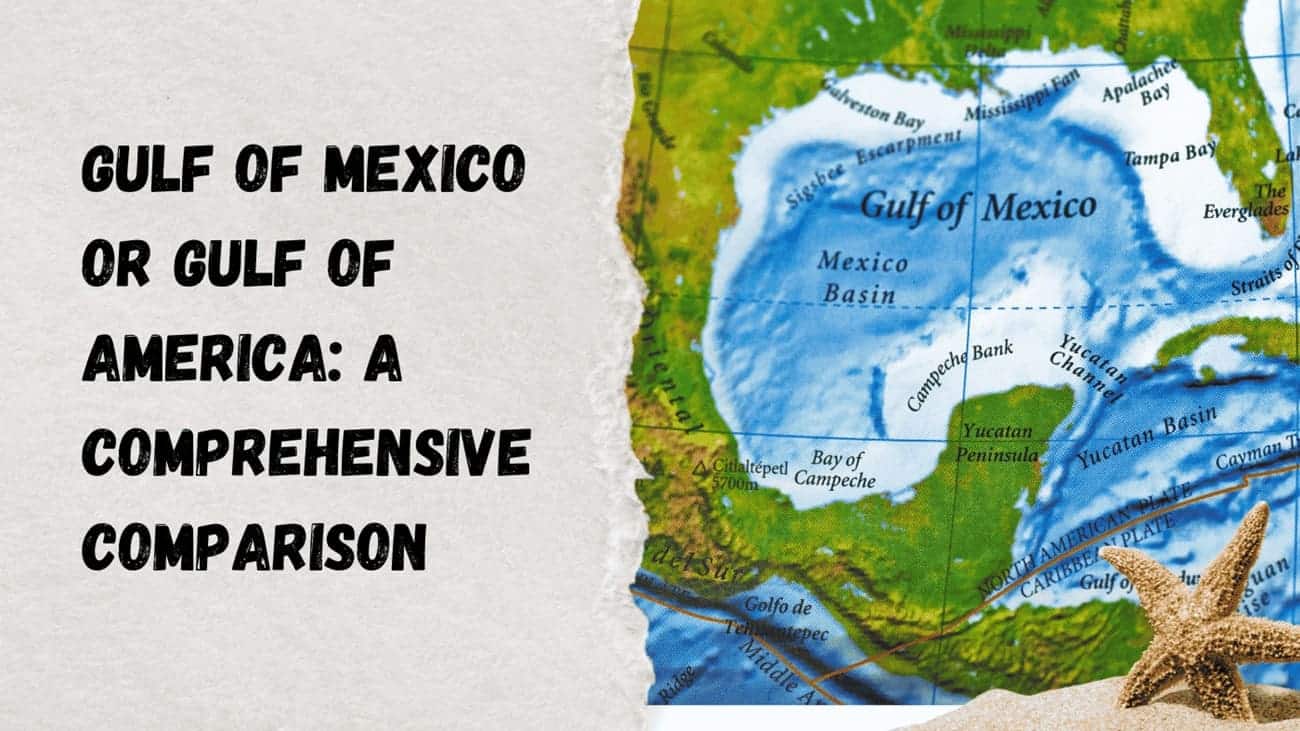The Gulf of Mexico and the “Gulf of America” are terms often used in discussions about geography, marine ecosystems, and socio-economic significance. However, while the Gulf of Mexico is a well-recognized geographical feature, the “Gulf of America” is not an established geographical term. This article explores the Gulf of Mexico in depth while speculating on what “Gulf of America” might imply, contrasting the two from environmental, economic, and cultural perspectives.
1. Geographic Overview
The Gulf of Mexico is a vast ocean basin located between the southeastern United States, Mexico, and Cuba. It spans approximately 1.6 million square kilometers and connects to the Atlantic Ocean via the Straits of Florida and to the Caribbean Sea via the Yucatán Channel. Its unique location and semi-enclosed nature create distinct environmental and oceanographic conditions.
The Gulf of America does not correspond to a recognized body of water in geography. If this term were used, it might refer to the Gulf of Mexico in an informal context, emphasizing its significance to the United States, or it might represent another concept entirely, such as the collective maritime zones adjacent to North America. For the sake of comparison, this article assumes it could refer to the Gulf of Mexico with a focus on its American aspects.
2. Environmental Characteristics
Gulf of Mexico:
- Biodiversity: The Gulf of Mexico is one of the most biodiverse marine environments in the world, home to over 15,000 species of marine life, including fish, coral, and marine mammals. Notable habitats include coral reefs, seagrass beds, and estuaries.
- Oceanography: The Gulf is characterized by its warm waters, which are driven by the Loop Current, a crucial component of the Atlantic Ocean’s circulation system. These waters influence regional weather patterns, including hurricane formation.
- Pollution and Environmental Challenges: The Gulf faces significant environmental challenges, including oil spills (e.g., Deepwater Horizon in 2010), nutrient runoff causing hypoxic zones, and overfishing.
Gulf of America (Hypothetical):
- If interpreted as the Gulf of Mexico with an American emphasis, the environmental characteristics remain consistent. However, the “Gulf of America” might imply a focus on conservation efforts and policies primarily spearheaded by the United States, such as marine sanctuaries and clean-up initiatives.
3. Economic Importance
Gulf of Mexico:
- Energy Production: The Gulf is a hub for oil and natural gas production. Offshore drilling operations contribute significantly to the energy needs of the United States and Mexico.
- Fishing Industry: The region supports a robust fishing economy, producing shrimp, oysters, and other seafood vital to local and national markets.
- Tourism: Coastal areas along the Gulf, such as Florida and Texas, are popular tourist destinations, attracting millions of visitors annually.
Gulf of America:
- Emphasizing the American contributions, this concept might highlight the Gulf’s role in U.S. economic development. Ports like Houston and New Orleans are vital for trade and commerce, supporting industries far beyond the Gulf region.
4. Cultural and Historical Significance
Gulf of Mexico:
- The Gulf has been central to the histories of indigenous peoples, European explorers, and settlers. The region’s cultural heritage includes Spanish colonial influences, Creole traditions, and indigenous practices.
- The Gulf also played a strategic role during historical events such as the exploration of the New World and the development of trade routes.
Gulf of America:
- If considered as a conceptual term, it could emphasize the Gulf’s influence on American culture, such as the unique cuisines of the Gulf Coast (e.g., Cajun and Creole dishes) and its contributions to music genres like jazz and blues.
5. Geopolitical Implications
Gulf of Mexico:
- Shared by three countries—the United States, Mexico, and Cuba—the Gulf is a region of international cooperation and tension. Issues such as fishing rights, resource extraction, and environmental protection require trilateral agreements.
Gulf of America:
- If this term were used to focus solely on American interests in the Gulf, it could imply a unilateral approach to policy-making. This perspective might prioritize U.S. economic and environmental goals over collaborative efforts.
6. Scientific Exploration and Research
Gulf of Mexico:
- The Gulf is a hotspot for marine research. Studies focus on its role in climate regulation, marine biodiversity, and the impacts of human activity.
- Institutions like the Gulf of Mexico Research Initiative have made strides in understanding the aftermath of environmental disasters, particularly oil spills.
Gulf of America:
- If viewed through an American-centric lens, this concept might emphasize U.S.-led research initiatives and technological advancements in marine exploration and conservation.
7. Hypothetical Implications of Renaming
Renaming the Gulf of Mexico as the Gulf of America would carry significant geopolitical and cultural implications. Such a change could:
- Alter Perceptions: Shift the narrative to highlight American dominance in the region, potentially straining relations with Mexico and Cuba.
- Spark Controversy: Raise questions about historical accuracy and international diplomacy.
- Influence Policy: Redirect attention to U.S.-focused initiatives, potentially sidelining collaborative efforts.
Conclusion
The Gulf of Mexico is a vital region with immense ecological, economic, and cultural significance. While the term “Gulf of America” is not geographically accurate, it could serve as a metaphorical or conceptual framework emphasizing American interests and contributions. Understanding the Gulf’s multifaceted role requires a balanced perspective that acknowledges its shared importance to all bordering nations. By fostering collaboration and sustainable practices, the Gulf can continue to thrive as a crucial natural and cultural resource for generations to come.



